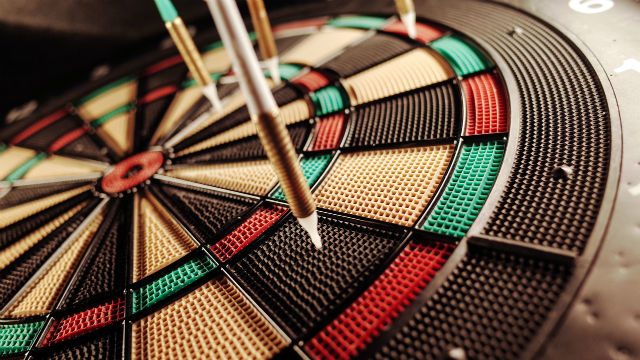 Reading Time: 8 minutes
Reading Time: 8 minutesAlmost half of Americans make resolutions each year. Not surprisingly, the most common resolutions people make are to lose weight and go the gym more. In fact, more than 65% of Americans say they plan to exercise more in the coming year.
But while many seem willing and eager to get started on a new objective, the percentage of people who are successful in achieving their resolutions is a meager 8%. Despite their noble intentions, most Americans will come up short when it comes achieving and/or staying at their goal.
The Problem with Traditional Goal Setting
The primary reason cited for failed resolutions is that people are vague in defining their specific aim to begin with. Theory states that goals need to be both specific and measurable to be achievable. Resolutions such as “get healthier,” “lose weight,” and “hit the gym more” are difficult to achieve as they aren’t precise enough.
But while clearly defining your goals can make you more likely to achieve them, some goals, like your typical New Year’s resolution, can have potential negative side effects. Recent articles in Psychology Today, Huffington Post, and Inc. Magazine even go so far as to suggest that traditional goal setting doesn’t work.
Setting a goal feels good and it’s admirable to want to lose weight or get healthier. So how is it possible that setting a resolution might have negative consequences?
A Harvard Business School report titled Goals Gone Wild: The Systematic Side Effects of Over-Prescribing Goal Setting suggested we are culturally over-prescribed when it comes to setting goals. The paper argued that goal setting can lead to focusing on the wrong things and even risky behavior. The paper cited several potential negative side effects including “An overly narrow focus that neglects non-goal areas; a rise in unethical behavior; distorted risk preference; corrosion of organizational culture; and reduced intrinsic motivation.”

From my years in fitness, I can corroborate these claims at least in part. I’ve witnessed countless fad diets, extreme exercise programs, and detox cleanses that seem to “work” in the short run. While many people indeed do achieve short-term success and a brief before-and-after photo moment, most people gain the weight back and then some.
The reality is that short-term diets don’t work. As soon as the gimmick wears off, the weight comes back. Furthermore, the yo-yo effect of such a short-term focus can have emotional and physiological repercussions.
How to Avoid More Failed Resolutions
Most would agree that while there are downsides to too much focus on the short-term, goals by their inherent nature are good things. And whether you are a New Year’s resolution person or not, it’s natural to look at the beginning of the year as an appropriate time for assessing change.
So before you set your next goal, here are six pieces of advice to consider when it comes to getting it right and making failed resolutions a thing of the past.
1. Establish the “Why” First
Another way to think about the “why” behind your goal is to define your stakes in it. The higher the stakes, the more likely you will persevere when you hit the inevitable stumbling blocks. Is your “why” to get more years with your loved ones? Those are some pretty high (and important) stakes.
In any journey, you’re likely to suffer failure, setbacks, and even defeat. Your “why” (your inner or “intrinsic” motivation) is what will keep you moving forward. Instead of simply starting the year by saying, “I want to lose 20 pounds,” or, “I want to achieve X% body fat,” start instead with the why. Ask yourself why you want to lose 20 pounds (or why you’ve gained the weight in the first place).
Yet another way to find your “why” is to ask yourself, “What happens if I am not successful in reaching my goal?” That answer helps you clearly establish what it is you’re fighting for. As Nietzsche famously said, “He who has a why can endure any how.”
2. Pick a Goal You Can Measure (and Not in Pounds)
Your goal being measurable is essential. But there’s a caveat: picking the right data to measure matters. The problem with pounds on the scale is that they don’t tell the whole story and aren’t necessarily indicative of health, wellness, or fitness. In fact, it is possible to improve your body composition and/or health-related metrics without a significant change in body weight. Therefore, picking a different measurement with reliable and relatable data is important.
Consider picking a gold standard measurement of body composition such as a DEXA scan. Picking an expensive test has a few advantages:
- Doing so solidifies your commitment as it’s more of an investment.
- Not having constant access to a high-level test means you won’t obsess and ruminate daily over your weight.
- Most importantly, something like a DEXA can or air displacement plethysmography (ADP) will provide accurate and meaningful data unlike the broad and less-defined measurements of BMI and body weight.
3. Pick a New Craft That Brings You Joy
One of the biggest predictors of a successful relationship is shared joy. Human beings stick with things that bring them genuine satisfaction, delight, and happiness. They leave people and situations that do not.
That said, this does not mean you should simply seek out things that are fun. In this context, the word fun is not synonymous with the word joy. Fun means Disneyland for some and partying with friends for others. Conversely, joy is what an athlete experiences when he or she gives a peak performance. Joy is what a dancer feels when she expresses her art and grace. Joy is the satisfaction of crossing the finish line after months and years of sweat equity.
Joy is also the culmination of actualized goals. By picking the right craft, joy is more accessible than in simply defining an aesthetic like six-pack abs. For instance, in defining your joy, you might determine your craft is Brazilian jiu jitsu. After picking your craft, then you develop a series of goals, starting from the biggest and working your way down:
- You begin by outlining your major/long-term goal of earning your black belt.
- Next you might define your mid-term goal of going from your white belt to blue.
- Then finally, you decide to support your development with a short-term goal of going to class three to four per week.
But it all starts with craft and the expression of joy.
4. Stop “Dieting” with Fitness
There are times in life when it’s appropriate to go cold turkey with toxic things in your life. But losing weight and going to the gym aren’t cold turkey moments.
It’s not practical or feasible to just avoid sugar for the rest of your life or never eat dessert again. It’s not maintainable to stay on a juice fast or cleanse forever nor is it doable to go to the gym twice a day every day for the rest of your life.
Yet this is exactly the approach many take to their New Year’s resolution and this is the crux of the reason short-term diets don’t work. Instead of such a drastic approach, start with one small step you can take today — like walking or biking to work or substituting fruits and quality protein for your typical sugar-loaded afternoon snack.
5. Get Some Sleep
Nothing throws you off track from reaching your goals like exhaustion. Dr. David Wagner, a sleep expert, says, “When you’re tired, you lack the self-control to eat healthy and the focus to be productive.” But when you are fully rested you are more likely to have the energy to exercise and a better likelihood to make better food choices.
Try going to bed at the same time every night. Natural sleep aids such as melatonin and valerian root can be helpful. And a mindfulness practice is also a good rest and sleep compliment.
6. Establish Your “Then What?”
Even after you define your why, establish a clearly defined goal, and meet your objective, your work is not complete. After you cross that marathon finish line or lose the twenty pounds, your job isn’t finished. In fact, it’s just beginning. The hard truth is that living at your goal takes more work than reaching it in the first place.
One of the critical mistakes people make in goal setting is forgetting the “then what.” One of the inherent problems with most goals is that they are predicated on an end point. But in reality, there is no “when I get there” — just the willingness and ability to keep fighting and resolving.
Goals should mirror life in that they should be more like a cycle. Running a marathon could be followed by a “then what” such as competing in a triathlon and losing twenty pounds could be supported by a plan for living at 180 pounds. Your then what plan is essentially a long-term plan for permanence and resiliency amid the ups, downs, and changes of life.
Make a New Kind of Resolution This Year
The desire for change and the process of setting clearly defined objectives is something we all should aspire to. But before embarking on a wellness crusade there are downsides to consider, like the allure of the quick fix and the immense cultural pressure to seek convenient answers.
Avoiding such pitfalls takes doing your due diligence in establishing your what, why, and how. The process of reaching goals and sustaining that success takes the willingness to be both introspective and committed. More than anything, real and lasting change takes the courage to face yourself.














